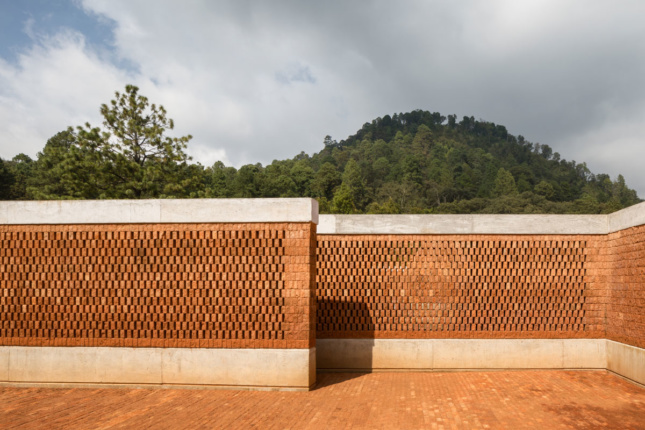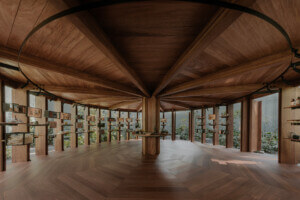The Architectural League of New York’s Emerging Voices award and lecture series highlights individuals and firms with distinct design “voices”, singling out those with the potential to go on to even greater heights.
2018 saw two rounds of judging; first by a panel of past Emerging Voices winners, and a second to pick the winners. The first-round jury included Virginia San Fratello, Sebastian Schmaling, Wonne Ickx, Lola Sheppard, Marcelo Spina, Carlos Jimenez, and Marlon Blackwell, as well as members of the second-round jury, Sunil Bald, Lisa Gray, Stella Betts, Jing Liu, Paul Makovsky, Tom Phifer, Chris Reed, and Billie Tsien.
AN profiled all of the emerging voices firms in our February print issue. Mexico City-based Fernanda Canales will deliver her lecture on March 8th, 2018, at the SVA Theatre in Manhattan.
After studying architecture at prestigious schools in Spain and Mexico, Fernanda Canales quickly discovered that the rigorous techniques she had learned had little relevance in the real world. Since starting her firm, in 2002, she has opted for a more flexible, thoughtful, personal approach.
“Instead of relying on formal, definite solutions, I try to give informal, indeterminate strategies,” said Canales, who has no office, no employees, and spends most of her time on construction sites, morphing her projects through constant observation and feedback. “I realized that my preparations didn’t match the reality of what clients want, what workers can do, the limits of budgets, and the reality of everyday life,” she said.
The Bruma House, located on a rural site about two hours from Mexico City, began as a fairly typical home for a couple and their two children. But once her construction team began work, Canales realized that the project needed to better adapt to its lush landscape and to a climate that swung dramatically from day to night. Now, no rooms are directly attached, so every space has at least two windows, allowing for maximum natural light. The building meanders its way through the site, maintaining existing trees and plant life in the process.
Since starting her firm, Canales has also shifted her focus to highlight the intermediate, often-neglected spaces between public and private. These, she noted, often have greater impact on the users and those living around the projects.
The Portales Dwelling, a multifamily apartment in Mexico City, diverges from the city’s typical housing blocks, with their closed stairs, shut-off alleys, and unimaginative envelopes. Portales opens up in every place it can, with large balconies in front, uncovered patios in back, open stairs in between, and roof terraces above.
“It addresses the beautiful climate of Mexico City, instead of ignoring it,” said Canales, who added that the addition of green and open spaces helps the development better fit into its context, minimizing the usual scorn from neighbors.

With the Elena Garro Cultural Center, also in Mexico City, Canales converted a long-abandoned private manor into a public amenity. The first step was removing a large wall between the home and sidewalk, reinforcing that all were welcome. To further show the public what was inside the cloistered historic house, Canales created a large glass-walled addition in front, framed in concrete, exposing books and other amenities, which are surrounded by a series of updated gardens and courtyards.
To keep her work as simple as possible, Canales generally avoids complex new materials, working often with concrete, which she values for its affordability, durability, and ease of use. “I go for what workers know how to do. It’s the most practical solution,” she noted.
Her reading rooms, built for the Mexican Ministry of Culture for use around the country, are modular concrete structures that function as meeting and recreational spaces. Their perforated facades, which create an effect that Canales calls “social lanterns,” allow them to be easily built (without glazing or other complications) and their interiors to be visible from the outside, making them safer.
Her careful, socially oriented approach, Canales pointed out, is not new, and she’s long been studying Mexican social housing—particularly its boom times, like the 1920s and 1950s. She’s soon publishing a book, called Shared Structure, Private Spaces: Housing in Mexico (Actar Publishers).
“I can’t imagine doing without thinking or thinking without doing,” she said. “It’s all important research.”

















